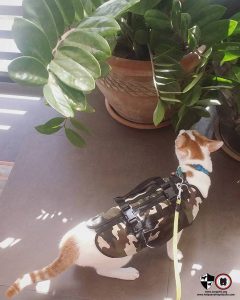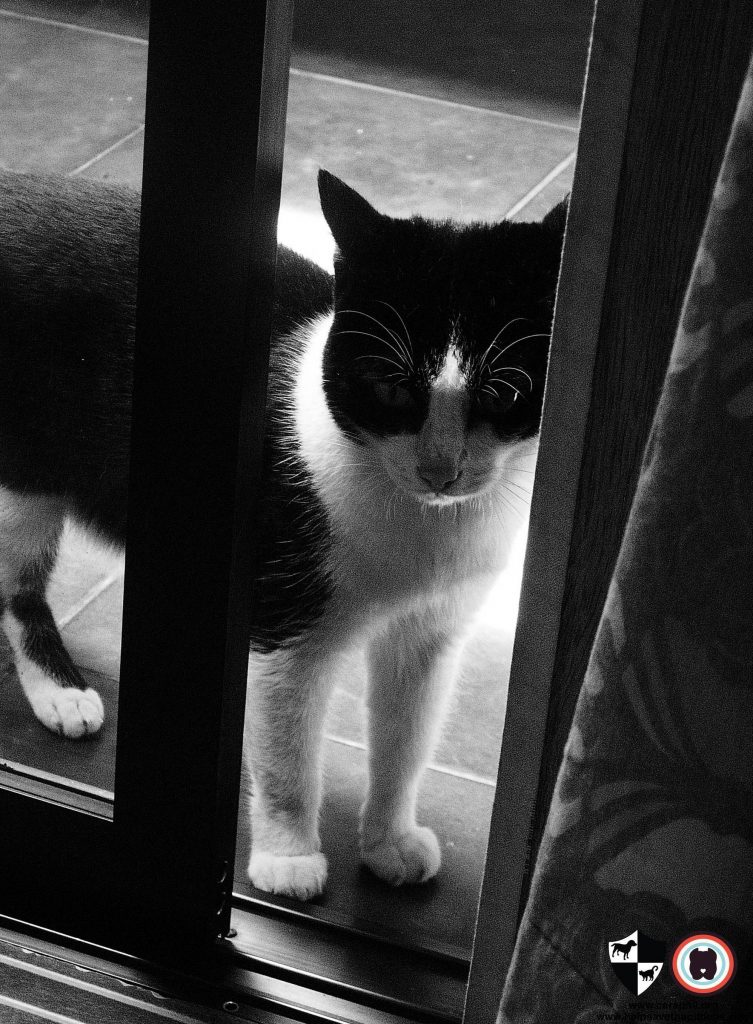Losing a beloved companion animal brings terrible pain and grief, but losing one because he disappeared and never came home – without knowing what ever happened – I think, is much worse. I lost my adopted cat Figaro this way. He was 9 years old, and while he was neutered and lived indoors with me in the city, he remained an indoor-outdoor cat whenever we stayed in the province, a place where he grew up and is very familiar with. There, he would leave the house whenever he liked, but always returned. Until that one day.
Was he picked up by someone else? I could only hope he went to a good home who would take care and love him as much, or more than, I did. Or did he roam too far and got disoriented and lived the rest of his life as a stray? Did he live long? Was he run over in the streets? Was he attacked by a dog, other cats, or a snake? Did he get trapped somewhere and died slowly? Or was he sick in the first place and he ran away to die? I hope he didn’t suffer much. I often asked myself these questions that I will never know the answers to.

Figaro’s last photo shoot. He would have been 15 years old today.
Fast forward to six years (and a month) and now owned by four cats – I promised I will do what I can to prevent this from happening again, and for fellow pet guardians to never go through the same heartbreak. If you are lucky enough to have a dog or cat go missing and return – send a prayer of thanks to your pets’ angels, but don’t risk a next time, where you might not be as lucky.
Here are some pointers I’ve gathered from my own experience, others’ experiences as shared in the Cat Care Philippines community and things I’ve read along the way. One rich resource on lost pets is Pet Hub, who created Lost Pet Prevention Month that’s commemorated every July.
Prevention is Better Than Cure: How not to lose your pets in the first place
1. Keep them indoors and secure their surroundings, so it is difficult for them to escape. Make their indoor life enriching so escaping will not be as attractive.
2. Spay and neuter. Intact pets are more likely to roam in their desire to mate. When he was 3 years old, the longest Figaro had been AWOL was 5 days – it was what made me decide to have him neutered.
3. Make pets wear a collar with an identification tag that contains your contact details. In case they do get lost, people who find them will know that they are owned pets and have a way to return them. (Figaro never wore one back then.)

All my cats now wear collars with an ID, even if they are exclusively indoor cats.
For added measure, it’s also worth making them wear GPS tracking devices on their collars. And though not yet common in the Philippines, microchips are used in some countries as a way to identify and track pets. People who find lost pets can bring them to any vet clinic for the microchip to be scanned and from there get the “owner’s” contact information.
(Note that for cats, a safety breakaway collar is most recommended so that they can avoid getting strangled in case their collars get caught in something. Breakaway collars may defeat the purpose of the ID tag, but it’s better to have a lost cat than a dead cat.)
4. Use sturdy leashes/harnesses and carriers if ever you have to transport your pet somewhere. Exercise extra caution if your pet is excitable or fearful of the outdoors.

One of my cats sporting a camo harness, and he’s only walking around in our garage.
5. Be up to date on and observant of your pets’ health. They may not show lots of symptoms, but cats or dogs can’t really talk about how they are feeling. Watch their appetite and activity level and even note subtle, out-of-the-ordinary behavior, and get them to the vet as much as possible at the earliest signs of illness. Pets, cats in particular, who feel sick (especially those who are dying), tend to hide and run away from home. For cats, this is instinctive behavior they inherited from their wild ancestors – wild cats hide when sick or dying so as not to be an easy target to their predators.
6. Always have recent good pictures of your pets. It will come in handy if you are ever put in a situation that you have to make lost pet posters or have to prove ownership.
What To Do When Your Dog or Cat Goes Missing
1. Act promptly. Delays will mean that your pet can roam farther, and that he’s denied immediate medical attention if ever he/she is injured or sick somewhere.
2. Think like your pet. Imagine the scenarios on why they got lost and where they would possibly go.
3. Look through every nook and cranny of your property first. Cats, especially, are expert hiders and most pets will not want to stray far from home. Maybe they’re just inside the house for all you know!
4. Look around the neighborhood and wait for them everyday (or multiple times a day). Call out their name and bring their food containers to re-enact the sound of your mealtime ritual.
5. Put up lost pet posters and distribute flyers at public areas like transport terminals, inside PUVs, neighborhood stores, waiting sheds, guard houses, barangay outposts, vet clinics. Including a reward is very helpful.

Earlier this year, former CARA cat (now adopted), Bicco, went missing but, thankfully, has returned home after a few days.
6. Knock on neighbors’ doors, and politely ask to have an ocular of your neighbor’s property. Look under cars, bodegas, roofs, anywhere a frightened pet might want to hide. Visit the pounds, animal shelters and vet clinics for surrendered lost pets.
7. Leave something outside your house that will smell of home (e.g., their litterbox, toys, your clothing, etc.). Dogs and cats have a more heightened sense of smell than us; familiar scents can lure lead them home.
8. Post on social media and make your post public (i.e., shareable). If your post is shared in animal-oriented groups or pages like CARA, it can potentially reach more people who live in your area.
9. When you find them, they will probably too frightened to approach you. Get ready with strong-smelling food, a leash for your dog or a carrier for your kitty. The food will make them set aside their fear in favor of noms which they may have been deprived of for a while.
10. Don’t give up! (I feel guilty that this was my biggest mistake.)
What If You Find Someone Else’s Lost Pet?
1. Go door-to-door and ask your neighbors if they lost a furbaby. Check vet clinics if anyone has reported a missing pet.
2. Post on social media and, again, make it shareable.
3. However, whether personally, by phone or on the internet, give only limited information about the pet you found – show only a black and white photo or leave out specific identifying details in the text. Let the potential claimers describe their lost pet and only entertain those who can give an accurate description.
I’ve read many stories about pets who miraculously come home, many years after they go missing. Maybe Figaro will show up at our doorstep one day. Or maybe not, as he is already past the normal feline life expectancy. I always feel helpless whenever I read about lost pets, but if through writing this, one pet parent avoids losing their pet, then whether or not Figaro comes back, his life would not have been in vain.
Click here for more information on why Spay/Neuter is beneficial for your pets.
Want to help?



